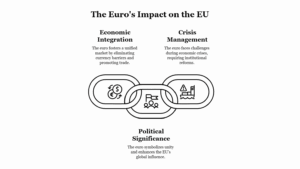The Human Development Index (HDI) is a composite measure developed by the United Nations Development Programme (UNDP) in 1990 to assess the social and economic development levels of countries. Unlike traditional economic measures such as GDP per capita, HDI focuses on a broader understanding of well-being and quality of life, combining multiple dimensions of human development into a single index.
Components of HDI:
HDI is based on three key dimensions, each representing a crucial aspect of human development:
- Health (Life Expectancy at Birth):
- The life expectancy at birth is used as a proxy for the health dimension of human development. It reflects the overall health conditions in a country, indicating the general quality of healthcare, nutrition, sanitation, and public health policies.
- A higher life expectancy suggests better healthcare services and a higher standard of living, leading to better health outcomes for the population.
- Education (Mean Years of Schooling and Expected Years of Schooling):
- Mean years of schooling represents the average number of years of education received by people aged 25 and older.
- Expected years of schooling measures the total number of years of schooling a child of school-entry age can expect to receive, assuming age-specific enrollment ratios remain the same throughout the years.
- These indicators measure the educational attainment and access to education in a country, which are crucial for social mobility and individual empowerment.
- Standard of Living (Gross National Income per Capita):
- This dimension is measured using the Gross National Income (GNI) per capita, adjusted for purchasing power parity (PPP). GNI per capita reflects the income and economic wealth of a country, which in turn impacts the standard of living.
- A higher GNI per capita usually corresponds to greater availability of goods and services, better infrastructure, and overall economic prosperity.
Calculation of HDI:
- HDI is calculated by first normalizing each of the three dimensions to a scale between 0 and 1. Then, the geometric mean of these three indices is taken to produce the final HDI value. The formula for HDI is as follows:
HDI=(Health Index×Education Index×Income Index)1/3HDI = \left( \text{Health Index} \times \text{Education Index} \times \text{Income Index} \right)^{1/3}
- The resulting HDI value ranges from 0 (lowest human development) to 1 (highest human development).
Interpretation of HDI Scores:
- Countries are typically classified into four categories based on their HDI scores:
- Very High Human Development (HDI score of 0.800 and above): Countries with high life expectancy, strong education systems, and high standards of living.
- High Human Development (HDI score of 0.700–0.799): Countries with decent healthcare, education, and moderate standards of living.
- Medium Human Development (HDI score of 0.550–0.699): Countries with moderate levels of healthcare, education, and economic conditions.
- Low Human Development (HDI score below 0.550): Countries facing significant challenges in terms of healthcare, education, and living standards.
Criticisms of HDI:
- Narrow Focus: While HDI provides a useful snapshot of human development, it may overlook critical factors such as inequality, gender disparities, and environmental sustainability. HDI does not account for income inequality within countries, which can lead to misleading conclusions about overall well-being.
- Exclusion of Other Dimensions: Important aspects like political freedom, human rights, environmental quality, and social inclusion are not directly captured by HDI.
- Cultural and Contextual Differences: HDI assumes a uniform standard of development that may not fully capture the diverse needs and values of different societies.
Conclusion:
The Human Development Index remains a key global indicator for comparing and monitoring human progress beyond mere economic growth. It provides a holistic measure of a country’s well-being, focusing on health, education, and living standards. However, it should be complemented with other indicators and policies that address inequalities and sustainable development to provide a more comprehensive view of progress.







Leave a Reply